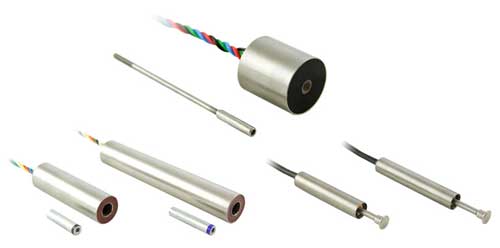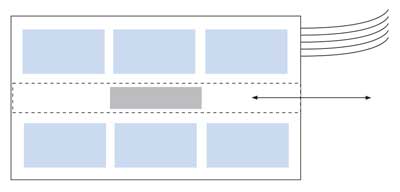What is An LVDT?
LVDT stands for linear variable differential transformer, a type of electrical transformer used to measure linear displacement (or position). They are also known as an LVDT sensor.
It consists of a primary coil, a movable core, and two secondary coils. The primary coil is connected to an alternating current (AC) power source, and the secondary coils are connected to a measurement device such as a bridge circuit.
As the core moves in or out of the transformer, the relative inductance between the primary coil and each secondary coil changes, causing a change in the output voltage of the secondary coils. This change in voltage can be used to determine the displacement of the core.
LVDTs are commonly used in industrial applications such as measuring the position of valves, pistons, and other mechanical components just name a few. They are highly accurate and have a wide measurement range.
In Simple Terms, an LVDT is a Measurement Device
An LVDT sensor is a measurement device. It is used to measure linear displacement (or position) of an object. It converts the small linear movement of an object into a proportional electrical signal, which can then be read and interpreted by electronic measurement equipment. The electrical signal produced by an LVDT is directly proportional to the displacement of the core, and can be used to determine the position of the object with high accuracy.
What Does an LVDT Measure?
An LVDT can be used to measure the linear displacement of a wide range of objects, across many different industries. Here are some examples:
Machine Tooling – LVDTs are commonly used in machine tools to measure the position of slides, tables, and other moving parts.
Industrial Process Control – LVDTs are used in process control systems to measure the position of valves, pumps, and other equipment.
Aerospace – LVDTs are used to measure the displacement of various components in aerospace applications such as aircraft flap and landing gear position.
Automotive – LVDTs are used to measure the displacement of various components in automotive applications such as engine valves and gearboxes.
Robotics – LVDTs can be used to measure the position of robotic arms and other moving parts in industrial robots.
Research and Development – LVDTs are used in many research and development settings, such as measuring the displacement of materials in materials testing and measuring the position of components in test stands.
It’s worth noting that LVDT’s are used when linear measurements are needed, other types of sensors like encoders, resolvers, potentiometers and others might be more suitable depending on the application.
How Do LVDT Sensors Work?
An LVDT typically measures displacement relative to an axis. The core of the LVDT is the moving part that is in contact with the object whose position is being measured, and it is designed to move along a specific axis. The position of the core relative to the axis is directly proportional to the electrical signal produced by the LVDT.
In most LVDT’s, there are three coils: a primary coil and two secondary coils. The primary coil is connected to an alternating current (AC) source, and the two secondary coils are connected in series opposition. When the core is in a neutral position, the induced voltage in the two secondary coils is equal and opposite, resulting in no net voltage output. When the core moves in one direction, the induced voltage in one of the secondary coils increases while the other decreases, resulting in a net voltage output that is proportional to the displacement of the core.
LVDT’s are often used in applications where high accuracy and stability are required, and they are not affected by temperature variations, electromagnetic interference, or other environmental factors. They are also relatively insensitive to external vibrations and mechanical shocks, making them suitable for use in harsh industrial environments.
| Fact | What this means to you |
| No contact between sensing elements | Infinite Life |
| Extremely rugged transducer | Can operate in harsh environments |
| Infinite resolution | Very small increments of movement are measured |
| Absolute measurement | No loss of position upon power down |
| Analog input and output | Signal conditioning compatible with most systems |
| Excellent repeatability | Can perform very precise go/no-go applications |
Please browse our products section to find an LVDT that fits your needs. If you don’t find what you are looking for, we can custom design a product to your specifications and requirements. Visit our contact us page and fill out the form, we will reach out within 24-48 hours. Thanks for visiting us!



